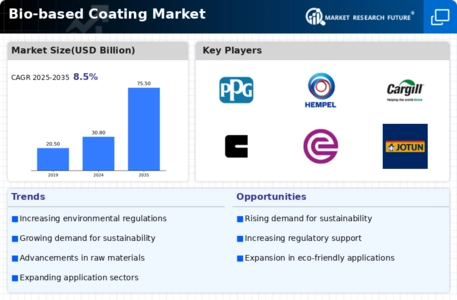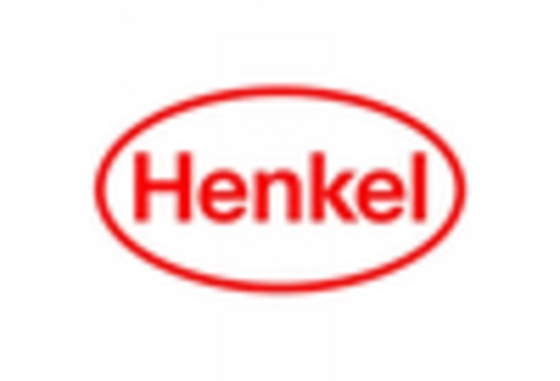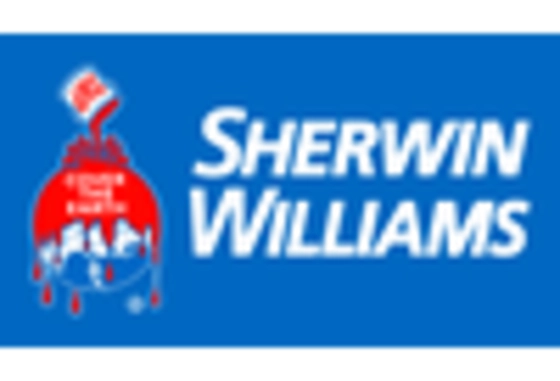Regulatory Support
Regulatory support plays a crucial role in propelling the Bio-based Coating Market forward. Governments worldwide are implementing stringent regulations aimed at reducing volatile organic compounds (VOCs) and promoting the use of sustainable materials. These regulations create a favorable environment for bio-based coatings, which typically have lower VOC emissions compared to conventional coatings. For instance, the implementation of policies that incentivize the use of bio-based products is likely to enhance market growth. Market data suggests that regions with robust regulatory frameworks are experiencing a faster adoption of bio-based coatings, as manufacturers seek compliance and competitive advantage. Consequently, the Bio-based Coating Market is positioned to benefit from ongoing regulatory changes that favor environmentally friendly alternatives, driving innovation and investment in bio-based technologies.
Diverse Application Areas
The diverse application areas of bio-based coatings are driving growth in the Bio-based Coating Market. These coatings are utilized across various sectors, including automotive, construction, and packaging, due to their versatility and performance characteristics. The ability to cater to multiple industries enhances market opportunities, as manufacturers can target different customer segments. Market data indicates that the construction sector is one of the largest consumers of bio-based coatings, driven by the increasing demand for sustainable building materials. Additionally, the automotive industry is also adopting bio-based coatings for their environmental benefits and performance attributes. As the Bio-based Coating Market continues to expand, the exploration of new applications and markets is likely to further stimulate growth, making it an attractive area for investment and innovation.
Technological Innovations
Technological innovations are significantly influencing the Bio-based Coating Market. Advances in formulation technologies and production processes are enabling manufacturers to develop high-performance bio-based coatings that meet diverse application needs. Innovations such as nanotechnology and bioengineering are enhancing the properties of bio-based coatings, making them more durable and effective. Market data indicates that the introduction of new technologies is expected to contribute to a market growth rate of around 12% in the coming years. As manufacturers continue to invest in research and development, the Bio-based Coating Market is likely to see an influx of novel products that cater to various sectors, including automotive, construction, and consumer goods. This technological evolution not only improves product performance but also expands the potential applications of bio-based coatings, further driving market expansion.
Sustainability Initiatives
The increasing emphasis on sustainability initiatives is a primary driver for the Bio-based Coating Market. As consumers and businesses alike become more environmentally conscious, the demand for eco-friendly products rises. Bio-based coatings, derived from renewable resources, offer a sustainable alternative to traditional petroleum-based coatings. This shift is reflected in market data, which indicates that the bio-based coatings segment is projected to grow at a compound annual growth rate of approximately 10% over the next five years. Companies are investing in research and development to create innovative bio-based formulations that meet stringent environmental regulations, thereby enhancing their market position. The Bio-based Coating Market is thus witnessing a transformation as manufacturers align their product offerings with sustainability goals, appealing to a broader customer base that prioritizes environmental responsibility.
Consumer Demand for Eco-Friendly Products
The rising consumer demand for eco-friendly products is a significant driver for the Bio-based Coating Market. As awareness of environmental issues grows, consumers are increasingly seeking products that align with their values, including those that are sustainable and non-toxic. This trend is particularly evident in sectors such as home improvement and automotive, where consumers are willing to pay a premium for eco-friendly options. Market data reveals that the demand for bio-based coatings is expected to rise, with projections indicating a potential increase of 15% in consumer preference for sustainable products over the next few years. Consequently, manufacturers in the Bio-based Coating Market are adapting their strategies to meet this demand, focusing on transparency in sourcing and production processes to attract environmentally conscious consumers.

















Leave a Comment